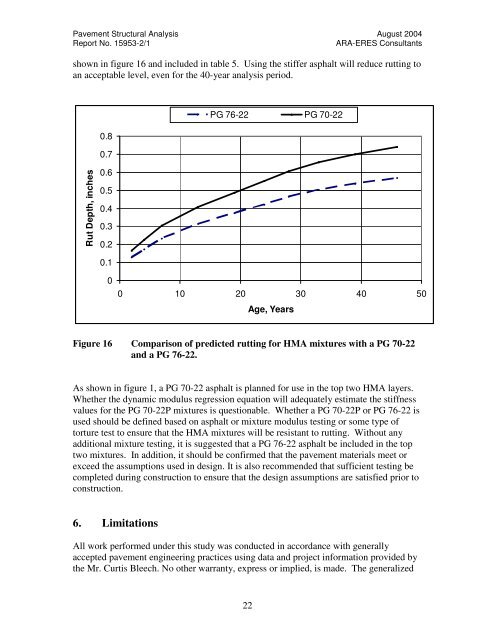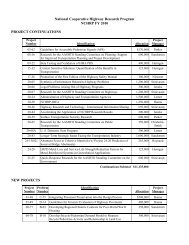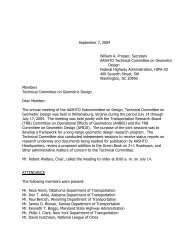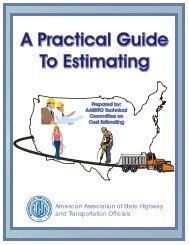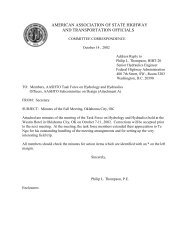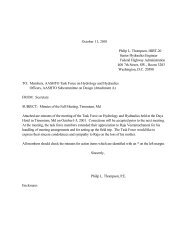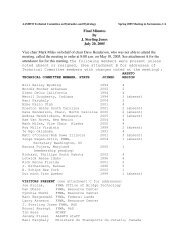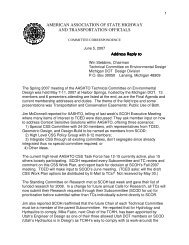Pavement Structural Analysis of the Design Recommendations for ...
Pavement Structural Analysis of the Design Recommendations for ...
Pavement Structural Analysis of the Design Recommendations for ...
Create successful ePaper yourself
Turn your PDF publications into a flip-book with our unique Google optimized e-Paper software.
<strong>Pavement</strong> <strong>Structural</strong> <strong>Analysis</strong> August 2004<br />
Report No. 15953-2/1 ARA-ERES Consultants<br />
shown in figure 16 and included in table 5. Using <strong>the</strong> stiffer asphalt will reduce rutting to<br />
an acceptable level, even <strong>for</strong> <strong>the</strong> 40-year analysis period.<br />
Rut Depth, inches<br />
0.8<br />
0.7<br />
0.6<br />
0.5<br />
0.4<br />
0.3<br />
0.2<br />
0.1<br />
0<br />
PG 76-22 PG 70-22<br />
0 10 20 30 40 50<br />
22<br />
Age, Years<br />
Figure 16 Comparison <strong>of</strong> predicted rutting <strong>for</strong> HMA mixtures with a PG 70-22<br />
and a PG 76-22.<br />
As shown in figure 1, a PG 70-22 asphalt is planned <strong>for</strong> use in <strong>the</strong> top two HMA layers.<br />
Whe<strong>the</strong>r <strong>the</strong> dynamic modulus regression equation will adequately estimate <strong>the</strong> stiffness<br />
values <strong>for</strong> <strong>the</strong> PG 70-22P mixtures is questionable. Whe<strong>the</strong>r a PG 70-22P or PG 76-22 is<br />
used should be defined based on asphalt or mixture modulus testing or some type <strong>of</strong><br />
torture test to ensure that <strong>the</strong> HMA mixtures will be resistant to rutting. Without any<br />
additional mixture testing, it is suggested that a PG 76-22 asphalt be included in <strong>the</strong> top<br />
two mixtures. In addition, it should be confirmed that <strong>the</strong> pavement materials meet or<br />
exceed <strong>the</strong> assumptions used in design. It is also recommended that sufficient testing be<br />
completed during construction to ensure that <strong>the</strong> design assumptions are satisfied prior to<br />
construction.<br />
6. Limitations<br />
All work per<strong>for</strong>med under this study was conducted in accordance with generally<br />
accepted pavement engineering practices using data and project in<strong>for</strong>mation provided by<br />
<strong>the</strong> Mr. Curtis Bleech. No o<strong>the</strong>r warranty, express or implied, is made. The generalized


